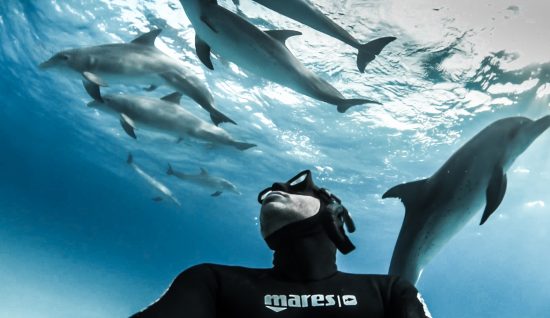
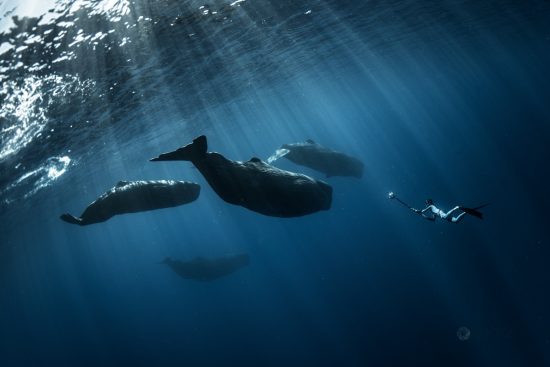
Group of sperm whales in Dominica
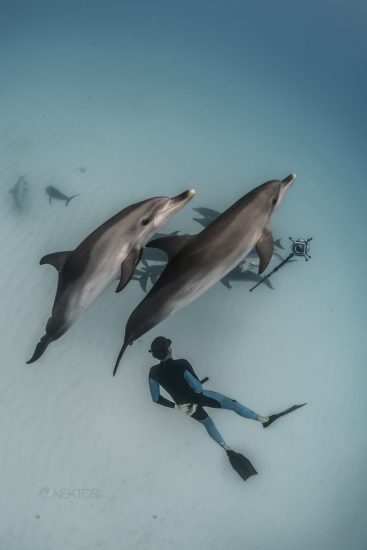
Filming dolphins in the Bahamas
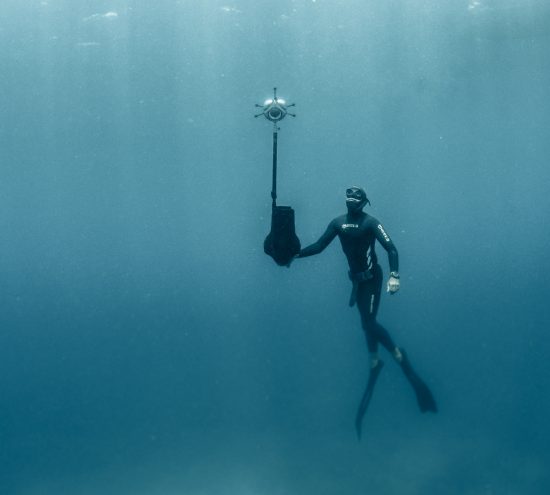
360° camera and sound recording device
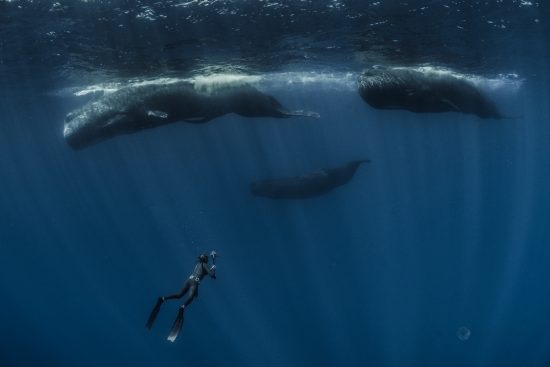
One of the largest living male sperm whale in the ocean, we calculated his size at 22m
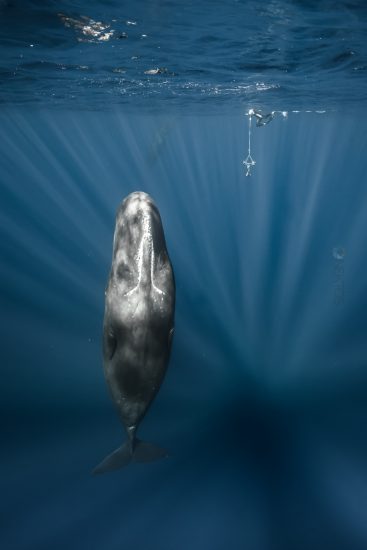
Sperm whale checking out a freediver using a recording device

Friendly sperm whales in Mauritius
For my first Mares blog I have decided to write about one of the most exiting projects I’m involved in: Darewin.
Darewin is the brainchild of Fabrice Schnoller, a French engineer and marine biologist. I joined him on a 21st century adventure aimed at gaining a better understanding of the intelligence of cetaceans.
The idea is to prove that whales and dolphins have amazing capabilities for complex communication.
Beyond that, we want to expose that in order to understand them we need to use their way of perceiving the world instead of using our traditional anthropocentric explanations.
The ultimate goal is, of course, to use these facts so that people realize that everything alive has to be respected. Conservation is always more efficient when people can relate to concrete and positive facts.
In order to do this, we decided to use a radically new approach involving in-water interactions and the latest technology.
We’ve developed 360° image and sound recording devices as well as software applications to correlate them and understand how whales and dolphins can communicate to a group or with one another like we would do in a private conversation.
We now have the largest cetacean video and sound database in the world- darewin.org
The database is open source and all scientists can use it.
On my side, what truly convinced me to invest myself in the project is that, beside the scientific approach, there is a behavioral component which is groundbreaking: going in the water to witness cetaceans approaching us, engaging in communicative behavior with us and with the other members of their group. For that to succeed, a true encounter is required, an encounter is when both parties involved are willing to interact. Usually scientists gather data and that’s all, here the data we collect are the sounds and images of animals checking us out and later « discussing » it with each other.
From the beginning we decided to only use freediving for the project. Freediving has a minimal impact and allows us to move easily in the 3 dimensions. We can spend the whole day in the water without having to rely on heavy equipment, air or gas supplies and of course like this we are somehow « closer » to the animals we are studying...though often we think that they are studying us!
Since we started the project in 2011 we’ve done lots of expeditions and presentations. In 2016 we were invited to present it at Solution Summit during the United Nations General Assembly. Each year, the Solution Summit selects 10 projects out of several thousand initiatives ranging from technologies, science and medicine to global social endeavors.
It’s nice to think freediving can contribute to a better future!
Written by
Fred Buyle
Date
5th May 2017









 Fred Buyle
Fred Buyle 5th May 2017
5th May 2017

